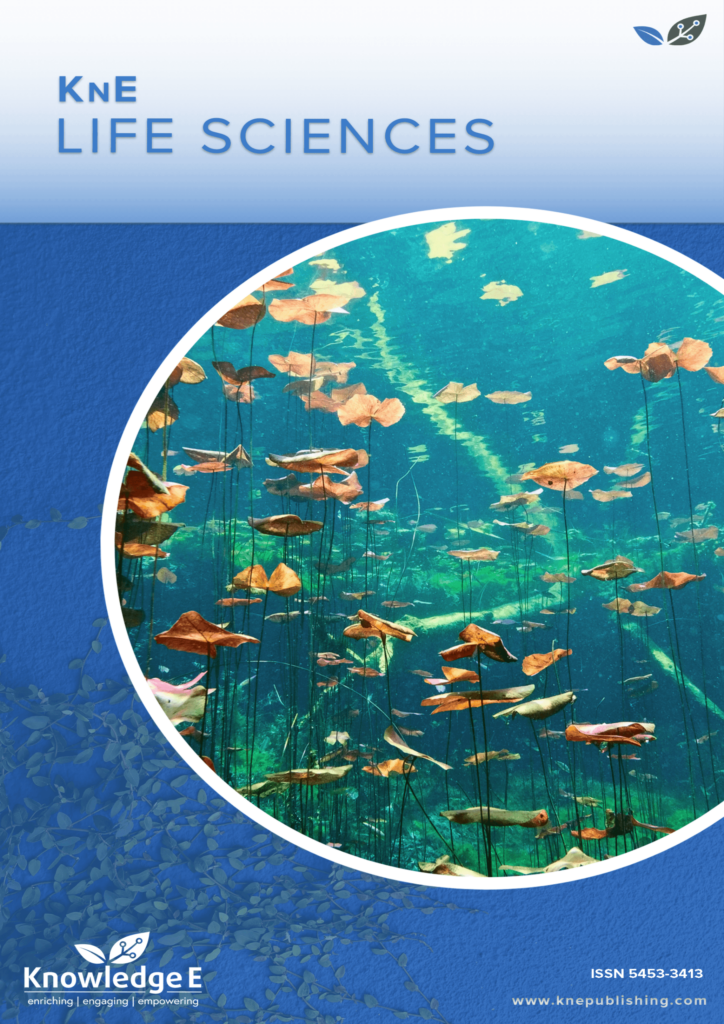
KnE Life Sciences
ISSN: 2413-0877
The latest conference proceedings on life sciences, medicine and pharmacology.
Gradients of Taxonomic Diversity among Local Floras in the Russian Arctic
Published date:Oct 29 2018
Journal Title: KnE Life Sciences
Issue title: The Fourth International Scientific Conference Ecology and Geography of Plants and Plant Communities
Pages:80–87
Authors:
Abstract:
Latitudinal and longitudinal changes in taxonomic variables were analyzed in 319 local floras in the Russian Arctic. Within the studied segment of latitudinal gradient, most changes can be described in terms of linear regression with negative coefficients (a number of species, genera and families), or positive coefficients (a proportion of the leading families and genera). However, the mean number of species in a family or genus almost does not change with increasing latitude, although it slightly increases as one moves eastward. The proportion of monocots does not correlate with latitude, but slightly decreases as one moves eastward. Proportions of various families change asynchronously. Although correlation with longitude was less pronounced, mean species richness was specific to many subprovinces, even within a certain subzone. These differences reflect both the diversity of landscapes and the history of flora formation.
Keywords: the Arctic, local floras, latitudinal and longitudinal gradient, floristic subprovinces
References:
[1] Malyshev, L. I. (1994). Floristic richness of the USSR, in Actual Problems of the Comparative Study of Floras, pp. 34–87. St Petersburg: Nauka.
[2] Rozenzweig, M. L. (1995). Species Diversity in Space and Time, p. 436. Cambridge: Cambridge University Press.
[3] Morozova, O. V. (2008). Taxonomic Richness of Eastern Europe: Factors of Spatial Differentiation, p. 328. Moscow, Nauka.
[4] Mittelbach, G. G., Schemske, D. W., Cornell, H. V., et al. (2007). Evolution and the latitudinal diversity gradient: Speciation, extinction and biogeography. Ecology Letters, no. 10, pp. 315–331.
[5] Kerkhoff, A. E., Moriarty, P. E., and Weiser, M. D. (2014). The latitudinal species richness gradient in New World Woody Angiosperms is Consistent with the tropical conservatism hypothesis. PNAS, vol. 111, no. 22, pp. 8125–8130.
[6] Grytnes, J. A., Birks, H. J., and Peglar, S. M. (1999). Plant species richness in Fennoscandia: Evaluating the relative importance of climate and history. Nordic Journal of Botany, vol. 19, no. 4, pp. 489–503.
[7] Qian, H. (1999). Spatial pattern of vascular plant diversity in North America North of Mexico and its floristic relationship to Eurasia. Annals of Botany, vol. 83, no. 3, pp. 271–283.
[8] Tolmatchev, A. I. (1974). Introduction to Phytogeography, p. 244. Leningrad: Leningrad University Print.
[9] Khitun, O. V., Koroleva, T. M., Chinenko, S. V., et al. (2016). Applications of local floras for floristic subdivision and monitoring vascular plant diversity in the Russian Arctic. Arctic Science, vol. 2, no. 3, pp. 103–126.
[10] Schmidt, V. M. (1979). Dependence of quantitative indices of some concrete floras in the European part of USSR. On geographical latitude. Botanicheskii Zhurnal, vol. 64, no. 2, pp. 172–183.
[11] Yurtsev, B. A., Zverev, A. A., Katenin, A. E., et al. (2002). Gradients in the taxonomical parameters of local and regional floras in Asian Arctic (related to the biodiversity monitoring sites network). Botanicheskii Zhurnal, vol. 87, no. 6, pp. 1–28.
[12] Matveeva, N. V. (1998). Zonality in plant cover of the Arctic. Transactions of Komarov Botanical Institute, vol. 21, p. 220.
[13] Cramer, W., Yohe, G. W., Auffhammer, M., et al. (2014). Detection and attribution of observed impacts. Climate Change 2014: Impacts, Adaptations and Vulnerability. Part A: Global and sectoral aspects. Contribution of Working Group II to the Fifth Assessment Report of the IPCC, pp. 979–1037. Cambridge: Cambridge University Press.
[14] Zverev, A. A. (2007). Information Technologies in the Study of Plant Cover, p. 304. Tomsk: TML-Press.
[15] Electronic Statistics Textbook. Tulsa: StatSoft Inc. Retrieved from http://www. statsoft.com/textbook/
[16] Yurtsev, B. A. (1994). Floristic division of the Arctic. Journal of Vegetation Science, vol. 5, no. 6, pp. 765–776.
[17] Koroleva, N. E. (2006). Zonal tundra on the Kola Peninsula – Reality or mistake? Newsletter of MGTU, vol. 9, no. 5, pp. 747–756.
[18] Chinenko, S. V. (2008). Local floras of the eastern part of the northern coast of the Kola Peninsula in comparison with local floras of adjacent regions. Botanicheskii Zhurnal, vol. 93, no. 1, pp. 60–81.
[19] Tolmatchev, A. I. and Yurtsev, B. A. (eds.). (1960–1987). Arctic Flora of the USSR, I-X. Leningrad: Nauka.
[20] Elven, R. (ed.). (2007). Annotated Checklist of the Panarctic Flora (PAF). Vascular Plants. Retrieved from http://nhm2.uio.no/paf/
[21] Khitun, O. V. (1998). Comparative analysis of local and partial floras in two subzones in the West Siberian Arctic, in Study of Biodiversity by the Methods of Comparative Floristics, pp. 173–201. SPb: NIIFH